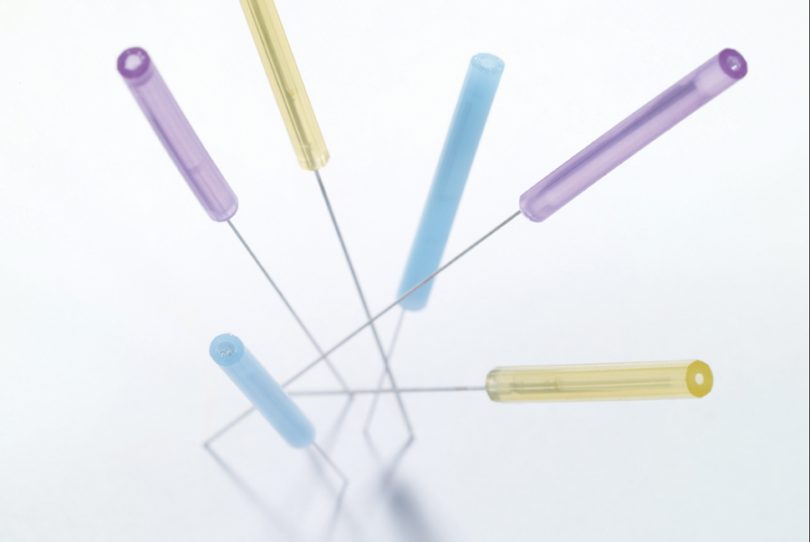Written by Darren Beilstein, D.P.T.
Pain medication is used to reduce pain, but what about tissue healing and function after an injury? Dry needling, a relatively new medical treatment option, is something to consider to treat muscle, tendon and other soft tissue pains.
Dry needling is a unique procedure designed to specifically target and restore muscle function, with an emphasis on improving tissue healing and restoring normal tissue function. This is important as continued activity with poor muscle function may lead to further tissue damage and increased pain. Dry needling is not meant to replace conventional medical procedures such as physical therapy or surgery. However, when combined with conventional treatment options, dry needling can be a powerful method to accelerate pain reduction, healing and the restoration of normal tissue function.
Modern dry needling evolved from the work of Dr. Janet Travell (former President John F. Kennedy’s personal physician) and Dr. David G. Simons in the 1940s. These physicians found that specific muscles tend to refer pain in recognizable patterns; for example, the heart will often refer pain to the neck, jaw and most commonly the left arm when it is injured or in distress. In the 1970s, Canadian physician Dr. C. Chan Gunn added to our knowledge base by showing a strong relationship between the nervous system and muscle function. More recently, Dr. Yun-tao Ma synthesized ideas from 40 years of clinical experience in biomedical acupuncture, not traditional acupuncture, with research he performed with the National Institutes of Health and the findings of Drs. Travell, Simons and Gunn. These figures have helped shape dry needling into its modern form.
According to Dr. Ma, modern dry needling should not be confused with traditional Chinese medicine (TCM) acupuncture. TCM is based on the use of “pulses,” “coatings” and “meridians” (or channels) derived from ancient Chinese philosophy and culture. Modern dry needling is based on current medical science and research known and accepted by today’s primary care, orthopedic, neurologic and pain management physicians.
Dry needling uses a very fine, solid filament needle to cause a small, specific injury or “lesion” in the tissue when it enters the body. The tiny needling induces injury signals the brain uses to initiate a sequence of events to replace or repair the damaged tissue with new, healthy tissue. Needling in a painful trigger point or muscular knot frequently provokes a “twitch” response from the muscle. This is both diagnostic as well as therapeutic, because healthy muscle tissue will not “twitch” when stimulated by the needle. Once a “twitch” response has been elicited, the muscle fibers in that area relax, inflammation is reduced and circulation improves. As a result of these physiologic processes, dry needling can specifically address muscle, tendon and myofascial pain and dysfunction.
Dry needling is not limited to the treatment of headaches, neck and lower back pain. According to Dr. Ma, dry needling can also be a safe means to improve physical performance in athletes by reducing the muscular stress that accumulates in the body with repetitive exercise. Muscular stress increases the body’s energy consumption and reduces efficiency, thereby negatively affecting physical performance. Pain pills may reduce pain, but are not a solution for restoring the function of an injured soft tissue. When professional athletes use pain medication or steroid injections to suppress pain and resume training and competition, they risk further tissue damage and potential career-ending injuries.
Dry needling has the ability to promote biomechanical and chemical changes within the muscle without the use of drugs by targeting the body’s mechanisms of tissue healing and pain relief. It is a new, safe and low-cost modality, which is easy to administer and has no side effects if performed by a trained practitioner. It can be effective by itself, but appears to work best when used with other conservative care options such as physical therapy. Although it is a new approach, dry needling is built upon the general principles of modern medical science, which are familiar to and accepted by all healthcare professionals.

